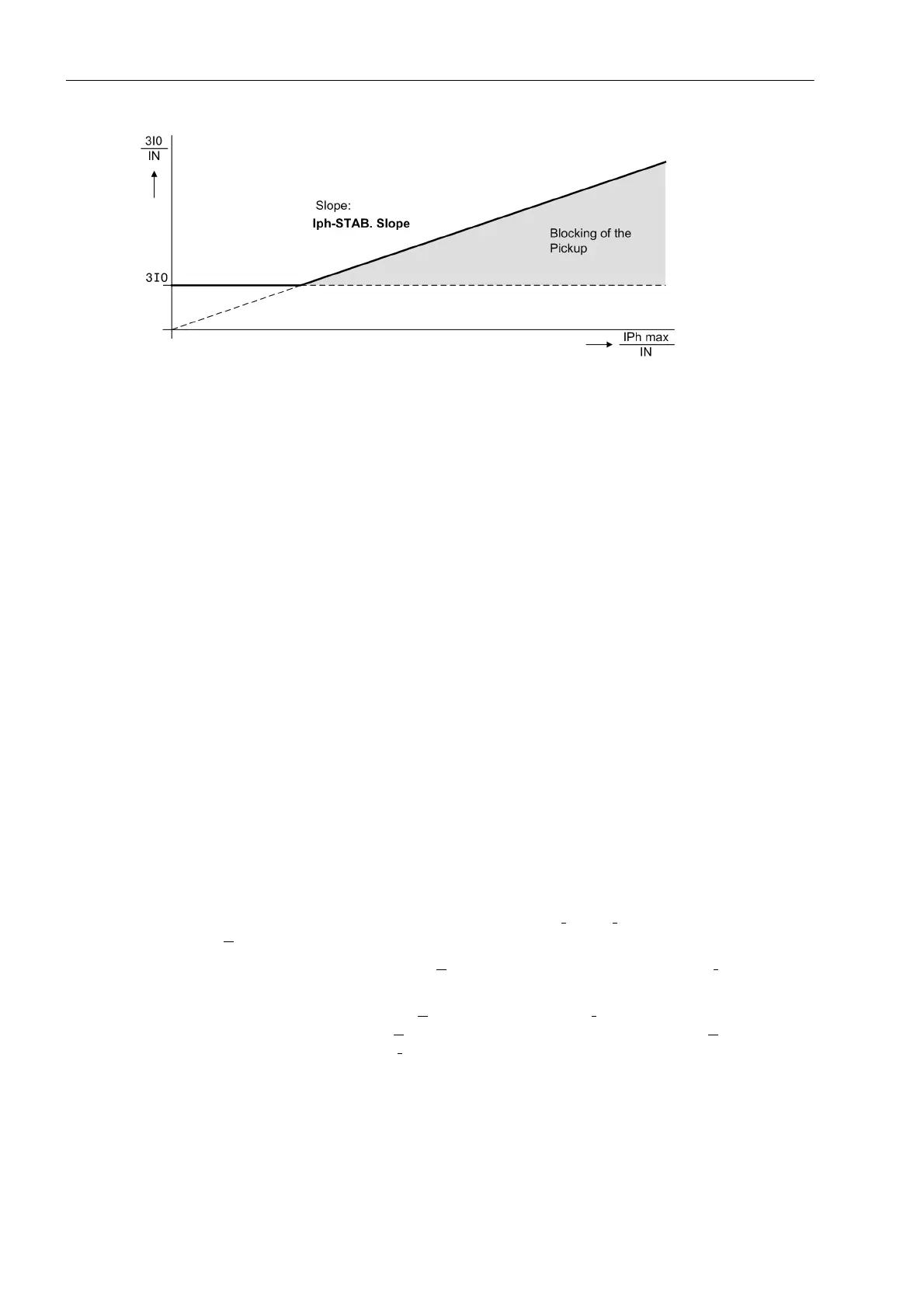Functions
2.8 Earth Fault Protection in Earthed Systems (optional)
SIPROTEC, 7SD5, Manual
C53000-G1176-C169-5, Release date 02.2011
226
Figure 2-109 Phase current stabilization
Inrush restraint
If the device is connected to a transformer feeder, large inrush currents can be expected when the transformer
is energized; if the transformer starpoint is earthed, also in the zero-sequence path. The inrush current may be
a multiple of the rated current and flow for several tens of milliseconds up to several minutes.
Although the fundamental current is evaluated by filtering of the measured current, an incorrect pickup during
energization of the transformer may result if very short delay times are set. In the rush current there is a sub-
stantial portion of fundamental current depending on the type and size of the transformer that is being ener-
gized.
The inrush stabilization blocks tripping of all those stages for which it has been activated, for as long as the
rush current is recognized.
The inrush current is characterized by a relatively large amount of second harmonic (twice the rated frequency)
which is virtually non-existent in the short-circuit current. Numerical filters that carry out a Fourier analysis of
the current are used for the frequency analysis. As soon as the harmonic content is greater than the set value
(2nd InrushRest), the affected stage is blocked.
Inrush blocking is not effective below a certain current threshold. For devices with normal earth current trans-
former and for devices without separate earth current transformer, inrush blocking is only effective if the earth
current is higher than 0.41 I
N
or if the current of the 2nd harmonic is higher than 0,041 I
N
.
For devices with sensitive current transformer, inrush blocking becomes effective as soon as the earth current
is higher than 22 mA or the current of the 2nd earth current harmonic is higher than 2,2 mA.
Determination of direction with zero-sequence system (zero-sequence voltage and/or transformer star point
current
The direction determination is carried out with the measured current I
E
(= –3·I
0
), which is compared to a refer-
ence voltage U
P
.
The voltage required for direction determination U
P
may be derived from the starpoint current I
Y
of an earthed
transformer (source transformer), provided that the transformer is available.
Moreover, both the zero-sequence voltage 3·U
0
and the starpoint current I
Y
of a transformer can be used for
measurement. The reference magnitude U
P
then is the sum of the zero-sequence voltage 3·U
0
and a value
which is proportional to reference current I
Y
. This value is about 20 V for rated current (Figure 2-110).
The directional determination using the transformer starpoint current is independent of voltage transformers
and therefore also functions reliably during a fault in the voltage transformer secondary circuit. It requires, how-
ever, that at least a substantial amount of the earth fault currents are fed via the transformer whose starpoint
current is measured.

